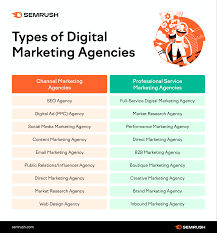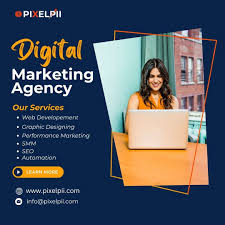The Power of Paid Media Advertising
In today’s competitive digital landscape, businesses are constantly seeking ways to stand out and reach their target audience effectively. One powerful tool that has proven to be highly effective is paid media advertising.
What is Paid Media Advertising?
Paid media advertising involves paying for ad space on various platforms such as search engines, social media sites, and websites. This form of advertising allows businesses to promote their products or services to a specific audience segment through targeted ads.
The Benefits of Paid Media Advertising
- Targeted Reach: With paid media advertising, businesses can target specific demographics, interests, and behaviours of their audience, ensuring that their ads are seen by the right people.
- Increased Visibility: Paid ads appear prominently on search engine results pages and social media feeds, increasing brand visibility and awareness.
- Measurable Results: One of the key advantages of paid media advertising is the ability to track and measure campaign performance in real-time. This allows businesses to make data-driven decisions and optimise their campaigns for better results.
- Quick ROI: Paid media advertising can deliver quick results in terms of website traffic, leads, and conversions. Businesses can see a return on investment (ROI) faster compared to other forms of marketing.
- Flexibility: Paid media advertising offers flexibility in terms of budgeting and targeting options. Businesses can adjust their ad spend and targeting parameters based on performance metrics and campaign goals.
Best Practices for Paid Media Advertising
To maximise the effectiveness of paid media advertising campaigns, businesses should consider the following best practices:
- Set Clear Goals: Define specific objectives for your paid campaigns such as increasing website traffic, generating leads, or boosting sales.
- Create Compelling Ad Copy: Craft engaging ad copy that resonates with your target audience and encourages them to take action.
- Monitor Performance: Regularly monitor key performance indicators (KPIs) such as click-through rates, conversion rates, and cost per acquisition to assess campaign effectiveness.
- A/B Testing: Test different ad creatives, messaging, and targeting strategies to identify what resonates best with your audience.
- Optimise Landing Pages: Ensure that your landing pages are optimised for conversions to maximise the impact of your paid traffic.
In conclusion, paid media advertising offers businesses a powerful way to reach their target audience effectively and drive tangible results. By leveraging targeted ads across various digital platforms and implementing best practices, businesses can enhance brand visibility, generate leads, and ultimately boost revenue through paid media advertising.
Understanding Paid Media Advertising: Key Questions and Answers
- What are examples of paid media?
- What is a paid media strategy?
- What is the use of paid media?
- What is an example of paid advertising?
- What is paid advertising called?
- What are the types of paid advertising?
- What is an example of a paid media ad?
What are examples of paid media?
Paid media encompasses various forms of advertising that businesses can utilise to reach their target audience and promote their products or services. Examples of paid media include search engine marketing (SEM), where businesses pay for their ads to appear on search engine results pages; social media advertising, which involves promoting content on platforms like Facebook, Instagram, and LinkedIn through paid ads; display advertising, where banner ads are placed on websites to attract users’ attention; and sponsored content, where businesses pay for articles or videos to be featured on third-party websites or social media channels. These examples highlight the diverse range of paid media options available to businesses looking to enhance their online visibility and drive engagement with their target audience.
What is a paid media strategy?
A paid media strategy refers to a comprehensive plan that outlines how businesses will use paid advertising channels to achieve their marketing objectives. It involves selecting the most suitable platforms, such as search engines, social media sites, or display networks, and determining the budget allocation and targeting parameters for paid ads. A well-defined paid media strategy takes into account the target audience, campaign goals, ad creatives, and performance metrics to ensure that businesses can effectively reach their desired audience and drive measurable results through paid advertising efforts.
What is the use of paid media?
Paid media serves a crucial role in modern marketing strategies by providing businesses with a means to promote their products or services to a targeted audience through paid channels such as search engines, social media platforms, and websites. The primary use of paid media is to increase brand visibility, drive website traffic, generate leads, and ultimately boost conversions. By investing in paid media advertising, businesses can reach a larger audience, engage with potential customers at various touchpoints along the customer journey, and achieve measurable results in terms of return on investment (ROI).
What is an example of paid advertising?
An example of paid advertising is sponsored content on social media platforms, such as Facebook or Instagram. Businesses can pay to promote their posts or create targeted ads that appear in users’ feeds based on specific demographics, interests, or behaviours. These sponsored posts blend in with organic content but are marked as “sponsored” to indicate that they are paid advertisements. By using paid advertising on social media, businesses can increase their reach, engagement, and conversions by targeting a relevant audience and driving traffic to their websites or landing pages.
What is paid advertising called?
Paid advertising is commonly referred to as “paid media advertising.” This form of advertising involves businesses paying for ad space on various platforms such as search engines, social media sites, and websites to promote their products or services to a specific audience segment. Paid media advertising allows businesses to target their ads based on demographics, interests, and behaviours, ensuring that their message reaches the right audience effectively. By investing in paid media advertising, businesses can increase brand visibility, drive website traffic, generate leads, and ultimately boost conversions.
What are the types of paid advertising?
When it comes to paid media advertising, there are several types of paid advertising that businesses can utilise to reach their target audience effectively. Some common types include search engine advertising, where businesses pay to have their ads displayed at the top of search engine results pages; social media advertising, which involves promoting content on platforms like Facebook, Instagram, and LinkedIn; display advertising, where visual ads are placed on websites and apps; video advertising, which includes pre-roll ads on platforms like YouTube; and native advertising, which seamlessly integrates promotional content into a publisher’s website or platform. Each type of paid advertising offers unique benefits and can be tailored to suit specific marketing goals and target audiences.
What is an example of a paid media ad?
An example of a paid media ad is a sponsored post on social media platforms such as Facebook or Instagram. In this type of ad, businesses pay to have their content promoted to a specific target audience based on demographics, interests, or behaviours. Sponsored posts appear in users’ news feeds alongside organic content but are labelled as “sponsored” to indicate that they are paid advertisements. These ads can include images, videos, text, and links to drive engagement and encourage users to take a desired action, such as visiting a website or making a purchase. Sponsored social media posts are an effective way for businesses to increase brand visibility, reach new customers, and drive conversions through targeted advertising strategies.




